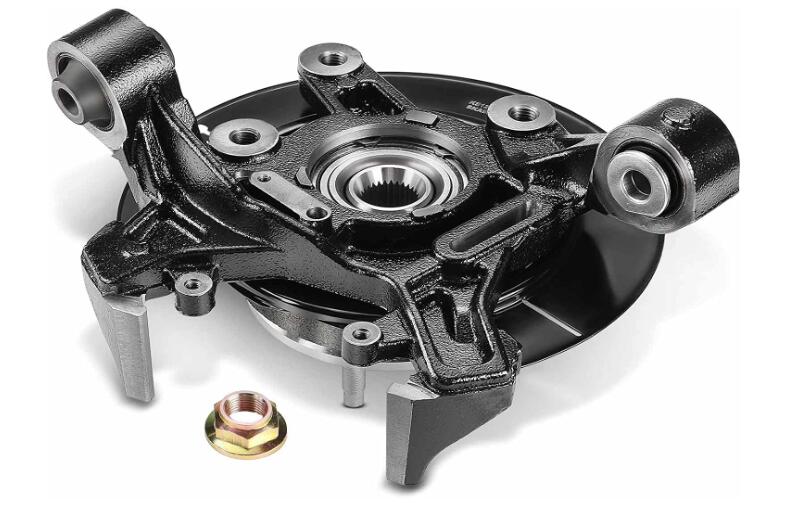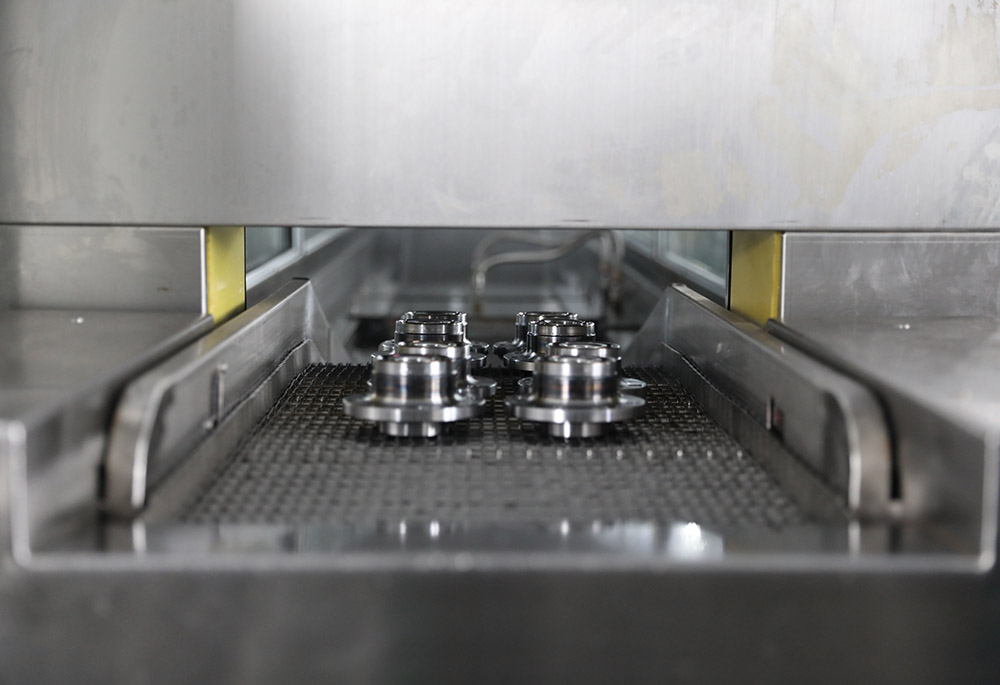Introduction
The South Korean automotive industry has been a significant player on the global stage for years, and its influence is especially evident in the aftermarket sector.
Companies like Hyundai and Kia have become household names worldwide, producing a demand for the aftermarket industry beyond South Korea’s borders.
This analysis seeks to demystify the global market for Korean car wheel bearings and hub assemblies, identifying fundamental market dynamics, challenges, and potential growth opportunities from a producer’s perspective.

The Global Presence of Korean Automotive Brands
Korean automotive brands, namely Hyundai and Kia, have left their mark worldwide.
With manufacturing plants and customer bases extending to every corner of the globe, the demand for Korean car parts is not just limited to South Korea but spans across continents.
Korean cars are prominent fixtures on the roads from the Americas to Europe to Asia.
This global presence has inevitably led to a thriving aftermarket industry.
Wheel bearings and hub assemblies, critical components for vehicle safety and performance, are among the high-demand items.
However, the market’s dynamics vary across regions, influenced by local vehicle preferences, economic conditions, and even driving habits.

Opportunities in Emerging Markets
Emerging markets, particularly in Asia and Africa, present promising growth opportunities for manufacturers.
Korean cars are popular in these regions due to their affordability, reliability, and parts availability.
As vehicle ownership increases in these areas, so does the demand for aftermarket parts.
However, these markets also pose unique challenges.
The prevalence of counterfeits and the need for more stringent regulations in some of these markets can make it difficult for manufacturers to maintain product quality and brand reputation.
Thus, establishing strong local partnerships and effective distribution networks is crucial for success in these regions.

The Impact of Electric Vehicles (EVs)
The rise of electric vehicles (EVs) is a global trend that will significantly impact the aftermarket industry.
Hyundai and Kia are heavily investing in EV technology, with several models already in the market and more in the pipeline.
EVs tend to have fewer moving parts and require fewer replacements over time, potentially affecting aftermarket sales.
However, new maintenance and repair requirements will also arise, leading to new opportunities for manufacturers.
Understanding these changing dynamics is critical for manufacturers looking to stay ahead of the curve.

Challenges in Mature Markets
In mature markets like the US and Europe, Korean cars face intense competition from local brands and Japanese manufacturers.
Aftermarket manufacturers aiming to succeed in these markets must produce high-quality parts and compete with established distribution networks and brand loyalties.
However, Korean cars’ reputation for reliability can work in favor of manufacturers, as a demand for quality replacement parts will always exist.
Navigating these mature markets requires a deep understanding of market dynamics, customer preferences, and the competitive landscape.
Manufacturers must also remain updated on the changing regulatory environment, particularly concerning environmental regulations and safety standards.

Adapting to Market Specifics: The Producer’s Perspective
Adapting to the market specifics of different regions can be challenging for a producer in the aftermarket industry.
Still, it’s essential for those looking to maintain a competitive edge. Korean cars have a reputation for reliability, and to uphold this standard, the parts used in repairs and maintenance must meet high-quality standards.
In-wheel bearings and hub assemblies mean ensuring high-quality materials, implementing rigorous testing procedures, and complying with international safety and quality standards.
The global spread of Korean automotive brands also means that aftermarket parts must suit various climates and driving conditions.
From the icy roads of Canada to the heat of the Middle East, wheel bearings and hub assemblies must perform reliably.
It is crucial to consider these varying conditions in the manufacturing process.

Leveraging Digital Platforms
In the age of the digital revolution, leveraging digital platforms can significantly enhance a producer’s visibility and reach.
E-commerce platforms, for instance, can offer an effective means of reaching customers globally, allowing manufacturers to bypass traditional distribution channels.
This digital approach can be particularly beneficial for reaching customers in regions with weak physical distribution networks.
Moreover, digital platforms can offer valuable customer data, providing insights into market trends, customer preferences, and future demand predictions.
These insights can be invaluable in guiding a producer’s strategies, from product development to marketing.

Developing Strong Partnerships
Developing solid partnerships, both locally and internationally, is another vital aspect of succeeding in the global aftermarket industry.
These partnerships can provide valuable support in several areas, from navigating regulatory landscapes to establishing effective distribution networks.
In the Korean car aftermarket context, potential partners could include local distributors, service centers, car clubs, or online communities.
By fostering solid relationships with these groups, manufacturers can enhance their brand reputation, gain valuable market insights, and increase their reach.

The Way Forward: Embracing Innovation and Sustainability
As we look towards the future, innovation, and sustainability will likely shape the global aftermarket industry.
Regarding innovation, the rise of electric and autonomous vehicles will bring new challenges and opportunities.
Manufacturers need to stay at the forefront of these trends, ready to meet the unique demands these vehicles will bring.
Sustainability is another critical factor. With increasing global emphasis on reducing environmental impact, manufacturers must consider the sustainability of their products and processes.
This could involve using more eco-friendly materials, optimizing manufacturing processes to reduce waste, or implementing recycling programs for old parts.

The Producer’s Role in Customer Education and Brand Loyalty
In an era of increased transparency and connectivity, customer education and the development of brand loyalty are more important than ever.
Producers play a vital role in these aspects and have the power to shape customer behaviors and preferences in their favor.
Customer education could focus on choosing high-quality, reliable parts in the aftermarket for Korean car wheel bearings and hub assemblies.
By effectively communicating the value of their products, producers can influence customers to opt for their products over cheaper, potentially lower-quality alternatives.
Further, by consistently delivering high-quality products and excellent customer service, producers can build strong brand loyalty.
A loyal customer base means repeated business and can result in word-of-mouth referrals, contributing to a producer’s overall market growth.

Navigating the Regulatory Landscape
In the global marketplace, regulatory compliance is a fundamental aspect that manufacturers must navigate.
Product safety, quality, and environmental impact regulations vary widely from country to country.
Understanding and adhering to these varying regulations is vital for producers of wheel bearings and hub assemblies for Korean cars.
It ensures legal compliance, avoids potential fines or penalties, and upholds the producer’s reputation.
While compliance can be complex and challenging, it also presents an opportunity.
By positioning themselves as a brand that prioritizes safety, quality, and sustainability, producers can differentiate themselves from competitors and appeal to increasingly conscious consumers.

Embracing Technological Advances
Technology is continuously evolving and reshaping every industry, including automotive.
For producers, embracing technological advances in their manufacturing processes and products can increase efficiency, cost savings, and a superior product.
Advanced manufacturing technologies, such as automation and additive manufacturing, can significantly enhance production efficiency and precision.
On the product side, incorporating technology into wheel bearings and hub assemblies, such as sensors for advanced monitoring and predictive maintenance, can add value to the product and attract tech-savvy consumers.

Conclusion
Demystifying the global aftermarket for Korean car wheel bearings and hub assemblies involves a multi-faceted approach, considering various factors, from market trends to technological advances.
For manufacturers and producers, success in this dynamic market requires a deep understanding of the market and a proactive approach to innovation, sustainability, and customer engagement.
While challenges are inherent in any global market, the potential rewards for those who navigate them effectively are substantial.
With the continued growth of Korean car brands globally, the future of the aftermarket for their wheel bearings and hub assemblies looks promising.
As producers, seizing these opportunities will require agility, foresight, and a relentless focus on delivering quality and value to the customer.




